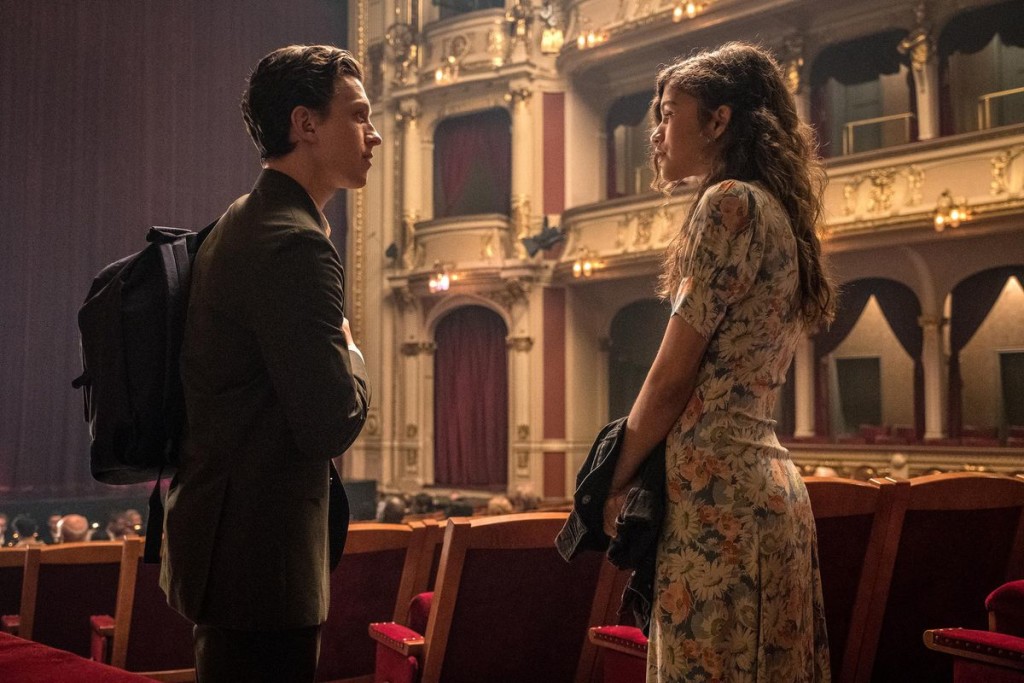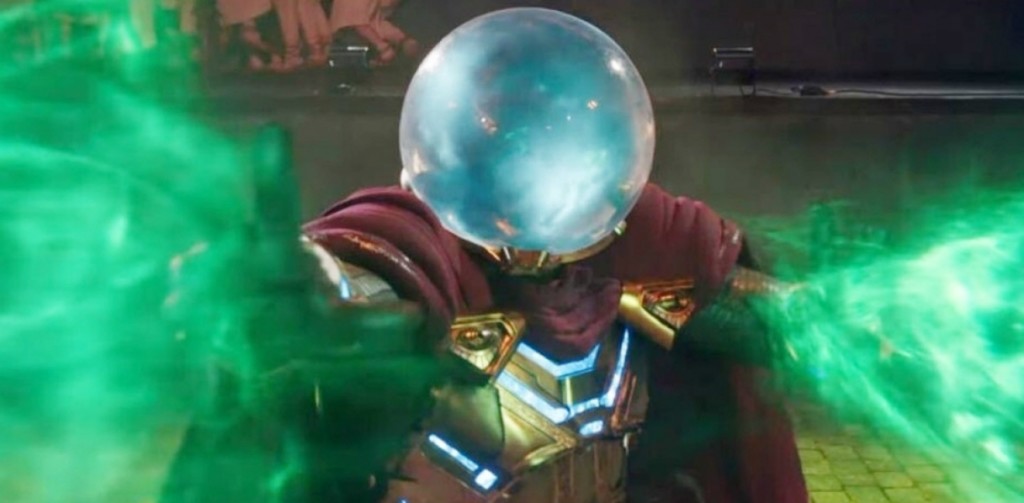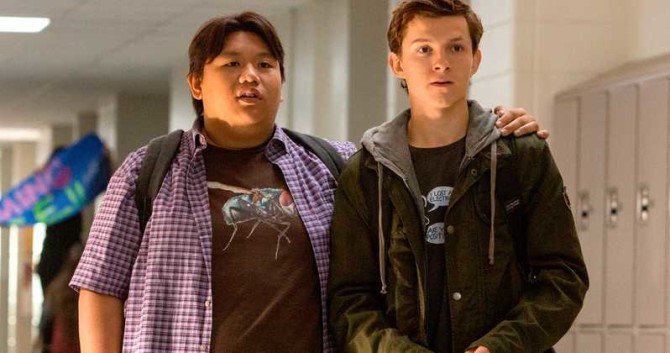Genre: Superhero
Premise: Peter Parker goes on a European vacation with his high school class, only to run into a cool new superhero from another dimension who isn’t everything that he seems.
About: Spider-Man Far From Home has pulled in 185 million dollars since it opened on July 2nd, which I’m sure, the marketing minds at Marvel will tell us, is a record-breaking opening somehow. This marks the end of Marvel’s “Phase Three.” Little is known about Phase Four. So far we’re getting a Black Widow movie even though she just died, The Eternals, Black Panther 2, Doctor Strange 2, Guardians of the Galaxy 3, and Captain Marvel 2. Many speculate that Phase 4 includes the “Skrulls,” an alien species that are slowly and methodically taking over earth.
Writers: Chris McKenna and Erik Sommers (based on the comic book by Stan Lee and Steve Ditko)
Details: 2 hours 9 minutes
I have good news for screenwriters.
This is the first time I watched a Marvel movie and thought, “There isn’t a whole lot more water left in this well.” Far From Home wasn’t a bad movie. It even contained some original elements, which is getting increasingly hard to do in this genre. But I couldn’t help but notice, “I’ve seen this all before.” If that’s true, it opens up the opportunity for original ideas to shine again. And if you’re a screenwriter, that should be music to your ears.
In Spider-Man’s defense, he was put in a tough position. This movie is the house party the night after Burning Man. No matter how many kegs you have. No matter how many people show up. Everyone’s still only giving you 50%, because they gave everything to the night before. Never have the stakes felt as low in a Marvel movie as they did in Far From Home.
For those who haven’t seen the film, Peter Parker and his school class go on a trip to Europe. Since Peter is emotionally drained from saving the world and losing his de facto father, Tony Stark, he doesn’t want anything to do with Spider-Man right now, so he leaves his spidey suit behind.
Once in Venice, Italy, however, a giant water monster thing shows up and starts beating up buildings. Out of nowhere, a flying man with a fishbowl on his head battles the monster, and with Peter’s help (who fights without his costume), defeats it. Nick Fury arrives and introduces Peter to this new superhero, Mysterio, who is from a parallel earth. Mysterio says more of these monsters are coming.
Meanwhile, Peter receives a late gift from Tony Stark – his glasses! Which have a built-in OS that controls all of Stark Industries, including his weapons arsenal! Determined to remain a high school kid, Peter gives the glasses to his new best friend, Mysterio, and goes on his merry way. Once Peter’s gone, everything around Mysterio begins changing. We realize that Mysterio has been using illusions all along to trick Peter into gifting him Stark’s glasses. Now, with the power of Stark Industries behind him, Mysterio can take over the world!
Far From Home has a lot of good but also a lot of bad.
Let’s start with Mysterio. I loved this character because he calls out exactly what we’re all thinking. “Elementals?! From a parallel earth? I can’t believe any of that worked!” Mysterio is playing into the absurdity of comic book movies these days. That meta approach immediately won me over. Cause as I was watching him, I didn’t even understand his powers. He shoots green rays? What does his fishbowl head accomplish exactly?? Once we realize Mysterio feels the same way we do, it’s fun.
Far From Home also uses a powerful tool in the screenwriter’s arsenal: THE INTERRUPTION. When you’re coming up with your plot, a simple way to look at it is that you have your hero going about their life… AND THEN SOMETHING COMES ALONG AND INTERRUPTS IT. The bigger the interruption, the better. The only thing Peter wants right now is MJ. That’s his goal on this euro-trip. That gets interrupted by Mysterio.
But don’t limit your interruptions to the overarching plot. You can use interruptions anywhere! In fact, whenever things are moving along too easily, too smoothly, you should be throwing an interruption into the mix. Interruptions are a key component to making your movie feel like real life. Because when does life ever go according to plan?
Another thing Far From Home does well is inject several original set pieces into the mix. Remember what we always say. Come up with an idea that allows you to do things audiences haven’t seen before. Especially if you’re writing a big budget movie, where set pieces are the primary currency. The character of Mysterio allows the writer to throw in a bunch of scenes where we don’t know what’s real and what isn’t. Reality fades and Nick Fury becomes Mysterio. An office building becomes an empty construction site. Giant freaky images give way to gianter freakier images and, pretty soon, Peter doesn’t know which way is up. Those were scenes we hadn’t seen before in Marvel movies.
Now on to the bad.
The “blip” may be the dumbest plot choice a franchise has ever implemented. I’m talking worse than midi-cholorians. In Avengers Endgame, the superheroes go back in time to reverse Thanos’s infamous snap, bringing back all the people who disappeared (of which Peter was one). Except while everyone who comes back is the same age, everyone who remained is five years older.
Why is this relevant to this movie? Because now you have this bizarre scenario where people who were in 6th and 7th grade are now older than the people who disappeared. Peter and his friends (who all conveniently disappeared, like him) are now younger than the people they were older than. It’s so unnecessarily bizarre and weird and doesn’t make any sense at all, that I wanted to walk out of the film right then and there. Marvel made a deal with the devil. They wanted this ‘go back in time’ plot, and they screwed up the entire logic of their franchise to get it. (By the way, if you’re wondering why Peter Parker got snapped in Infinity War, it wasn’t some brave creative choice. They had no choice but to do it because if Peter wasn’t snapped, he would now be 21 and look totally different and not be in high school anymore).
I’ll give it to McKenna, though. He did the best he could. Remember when you’re writing at this level, you’re rarely coming up with the plot yourself. The plot is being handed to you and along with it, a set of problems. That’s what you’re being paid for – to problem solve, and to do it quickly. For example, they’ll say, “We need a scene that conveys the blip in an easy-to-understand way.” So McKenna comes up with an opening school news segment where two high school anchors humorously explain how the blip happened. It’s not perfect. Everyone who works in Hollywood groans at the scene. But as long as it works for the masses, that’s fine. And McKenna makes the scene funny enough that we’re not focused on scrutinizing the stupidity of it.
For the next issue, I don’t know who to blame. It could be the producers, it could be Feige, it could be the director, who knows. But one of the worst things you can do in a script is sacrifice character consistency for a joke or a scene or a plot point. In the movie’s worst sequence, the class is being bussed from Venice to Prague, and as Peter talks to Tony’s AI glasses, he inadvertently orders them to kill one of the other students. We cut to Stark’s super-satellite in space, where a killer drone emerges, flies down to the bus, forcing Peter, who all of a sudden morphs into Jar Jar Parker, to dismantle it before it kills the kid, all while keeping his identity a secret. The sequence makes Peter Parker look like the dumbest person on the planet. The faultiness of the software – that it would make such a mistake in the first place – is inconsistent with everything about Tony Stark. Not to mention, nothing about the sequence rings true.
It’s only when you take a macroscopic look at the scene that you realize why it’s in the movie. The story needed to set up the danger of these glasses – what they had access to – for us to understand what Mysterio had gotten his hands on, as well as set up the satellite’s use for later in the film. This was McKenna’s not so ingenious idea for doing so. Even before the scene happened, I was asking myself, “Why are they driving to Prague instead of flying?” It made absolutely no sense. Afterwards, however, it was clear: It would be easier to create a “Peter saves the other student from the Stark Satellite” moment on a bus than it would on a plane.
And look, I get it. Sometimes producers want scenes written in 24 hours and you do the best you can do. Still, it was moments like this that kept Far From Home from being anything other than an average Marvel movie. I’m not even sure I liked it as much as Captain Marvel. And that was the most generic Marvel movie of them all.
I don’t know if I’d ever be able to give a movie with both Tom Holland and Jake Gylenhaal a bad grade. In my happy place, the three of us are best friends and play video games all day and order In and Out from Postmates at six hour intervals. So I’m recommending this mainly on their charisma and star power alone. But if upcoming Marvel movies begin to trend in this direction, they may point back to this film and say, “That’s where it all started.”
[ ] What the hell did I just watch?
[ ] wasn’t for me
[x] worth the price of admission
[ ] impressive
[ ] genius
What I learned: “The Power of the Interruption” – I have a scene-writing challenge for you. Two characters. Have them doing something fun. They’re in a good mood. And then INTERRUPT them with something not good. This is one of the easiest ways not just to start a movie, but to write a good scene.




